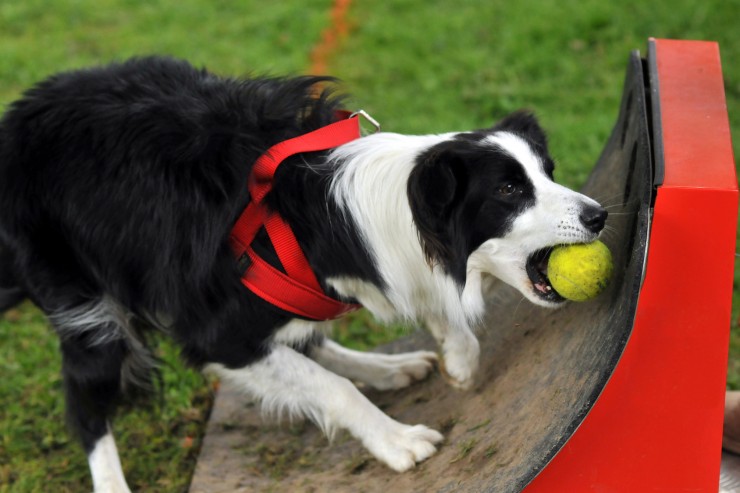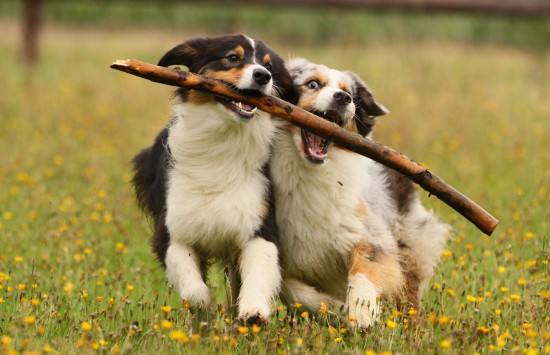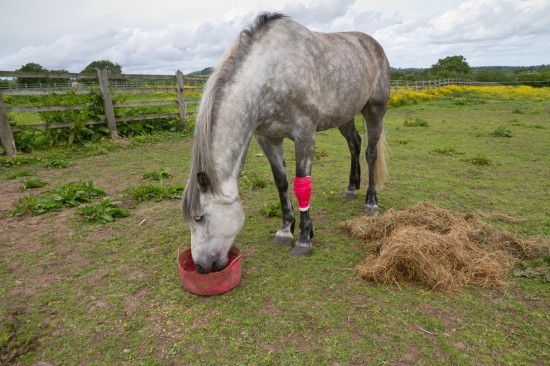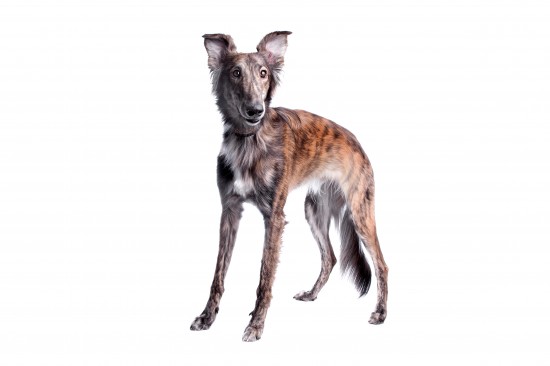

Flyball is one of the newest recognised canine sports in the UK, but one that is quickly becoming more and more popular and widely recognised, with the annual flyball championships being one of the features of the huge and world famous Crufts dog show. Flyball is aimed at intelligent, high energy dog breeds such as the Border collie and any other dog, pedigree or mutt, which has bundles of energy and the smarts to learn new skills!
The basics of flyball are simple-run as a team activity, dogs take it in turns to race down a row of low hurdles, activate a trigger in order to release the ball, catch the ball and race back to their handler, before the next dog sets off. Flyball is one of the best ways to keep working dog breeds active, happy and challenged outside of a working environment, and also, to meet other people and dogs and join a team.
More information on flyball and how it works can be found in this previous article, and if you have decided that you would be interested in having a go with your dog but want to find out if they would like it and be any good at it first, it is entirely possible to teach your dogs the basics at home, and then decide if you want to try to find a team, or simply use it as fun and exercise for you and your dog!
In this article, we will share some tips and tricks for how to teach your dog the basics of flyball. Read on to learn more!
The most basic essential of flyball is the catch, which depends on your dog’s ability to spot and intercept a ball in mid-air successfully. Most working dog breeds and high energy dogs will automatically focus on a tennis ball as they have learnt that it means a game and some running around is in the offing, but as well as running and chasing, you will also need to teach your dog to work in a controlled manner, even at speed!
Teach your dog to focus on the ball or object under a range of conditions, including long throws and short throws, and then progress to mimicking the flyball trigger throw, by throwing the ball up at speed.
When your dog has got the hang of watching the ball and pursuing it, you will need to work on what happens next! Dogs that are mad for chasing a ball will usually tackle actually catching it in one of two ways-they will come right back to you and drop it ready for you to throw it again, or they will bring it back to you but be reluctant to let you have it!
However, flyball requires an extra element of skill and control-your dog must drop the ball when told to, but not until then! After the ball is triggered in flyball, your dog needs to catch it and then keep hold of it while they return up the row of hurdles, and not drop it immediately!
Most dogs will leap over a low fence or obstacle for fun or because they are encouraged to, and flyball means adding the ball catch to the hurdles too! Buying flyball equipment just to try it out at home can be costly, so you may want to think outside of the box in order to make some hurdles on the cheap, using things like a couple of bricks for stands and a broom stick!
Ensure that what you use is light enough to fall if your dog knocks it, and not hurt their legs!
Mimicking the flyball trigger, when your dog presses the trigger of the box and the ball releases, is something that you will be unlikely to do without the right kit, but getting your dog into the routine of hitting a fake “trigger spot” will get them into the right pattern! Simply paint a large, clear spot on a plank of wood or something else that you can set up at the end of the hurdles, and teach your dog to hit it with their paw in order to get you to throw the ball for them!
Flyball rounds are timed, and assuming that neither team makes any errors that lead to faults or penalties, the fastest team will win.
This means that high speed hurdling is essential in order to score well, but the turn at the end by the flyball box is also important when it comes to gaining or losing valuable seconds!
Working with your dog to improve their speed on the fly and their cornering speed with practice, obstacles and poles can all help to shave seconds off their time, and make them more useful to their team, if you plan to join one in the future!
One of the most annoying ways that a team can lose points and ultimately, a scoring position is by accruing faults-this happens for various reasons, such as a dog using the wrong lane, missing a hurdle, or otherwise colouring outside of the lines! To get good at flyball, you should work on your dog’s obedience, control and range of verbal commands under pressure and from a distance, to avoid any penalties in the final rounds!
 Seven Ways To Keep Your Dog’s Mind Active And Engaged
Seven Ways To Kee
Seven Ways To Keep Your Dog’s Mind Active And Engaged
Seven Ways To Kee
 What Is Ocd? How Does The Condition Affect Horses?
What Is Ocd? How
What Is Ocd? How Does The Condition Affect Horses?
What Is Ocd? How
 Six Cat Breeds That Originate In The Uk
Six Cat Breeds Th
Six Cat Breeds That Originate In The Uk
Six Cat Breeds Th
 What Your Dog’s Urine Can Tell You About Their Health!
What Your Dog’s U
What Your Dog’s Urine Can Tell You About Their Health!
What Your Dog’s U
 Silken Windhound Dog Information
Silken Windhound
Silken Windhound Dog Information
Silken Windhound
Copyright © 2005-2016 Pet Information All Rights Reserved
Contact us: www162date@outlook.com